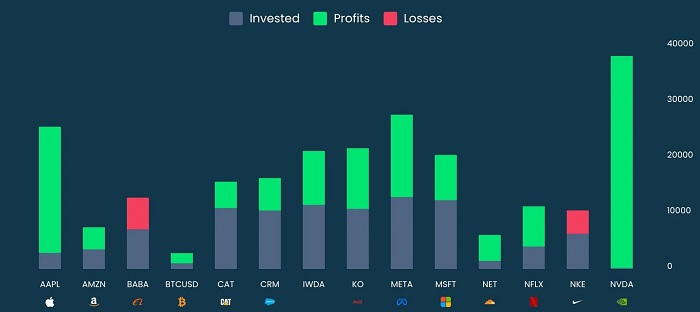When building a successful investment strategy, choosing the right analytical tool can significantly impact your long-term financial outcomes. Many investors find themselves comparing portfolio analyzer platforms with portfolio visualizer tools, wondering which approach provides superior insights for their specific needs. Understanding the key differences between these analytical approaches helps ensure you select the platform that aligns with your investment goals and experience level.

Understanding Portfolio Analysis vs Visualization Approaches
A portfolio analyzer focuses on comprehensive tracking and performance assessment across all your investment accounts. These platforms excel at aggregating data from multiple sources, providing real-time portfolio monitoring, and delivering actionable insights about asset allocation, risk exposure, and investment performance trends.
Portfolio visualizer tools, conversely, specialize in advanced analytical techniques like backtesting, Monte Carlo simulations, and factor analysis. These platforms help experienced investors test hypothetical scenarios and understand how different allocation strategies might perform under various market conditions.
The fundamental difference lies in their primary purpose: analyzers emphasize current portfolio management and optimization, while visualization tools focus on strategic planning and scenario modeling.
Key Features That Matter for Investment Success
Modern analysis platforms provide automated account aggregation, eliminating manual data entry while ensuring accurate tracking across brokerages, banks, and retirement accounts. This automation proves essential for investors managing multiple accounts who need consolidated performance reporting.
Advanced portfolio analysis software typically includes fee analysis, tax-loss harvesting identification, and rebalancing recommendations. These features translate directly into cost savings and improved after-tax returns for individual investors.
Portfolio visualizer tools excel in different areas, offering sophisticated backtesting capabilities that show how specific allocation strategies would have performed during historical market periods. Monte Carlo simulations help investors understand potential future outcomes under various economic scenarios.
Choosing Between Analysis and Visualization Tools
Your investment experience level significantly influences which tool type serves you better. Beginning investors typically benefit more from analysis platforms that provide clear, actionable guidance about current holdings and allocation improvements.
Advanced investors often find portfolio visualizer tools invaluable for testing complex strategies before implementation. However, these platforms require substantial financial knowledge to interpret results correctly and avoid common analytical pitfalls.
Consider your primary investment goals as well. If you’re focused on optimizing current holdings and maximizing tax efficiency, a robust portfolio analyzer provides more immediate value. For strategic asset allocation planning and long-term strategy development, visualization tools offer superior capabilities.
Integration and Practical Considerations
Data connectivity plays a crucial role in tool effectiveness. The best analysis platforms connect automatically to major financial institutions, updating your holdings and transactions seamlessly. This integration ensures accurate performance tracking without requiring manual intervention.
Security standards vary significantly between platforms. Reputable tools use bank-level encryption and read-only access protocols, never storing your login credentials or enabling transactions. Always verify security measures before connecting financial accounts to any analytical platform.
For investors seeking professional-grade analysis without overwhelming complexity, OnePortfolio.io offers professional-quality capabilities alongside intuitive visualization features. This platform combines advanced portfolio analysis with user-friendly interfaces, making sophisticated investment insights accessible to individual investors regardless of their technical expertise.
Making the Right Choice for Your Investment Journey
The ideal solution often depends on your specific circumstances rather than theoretical superiority of one approach over another. Investors managing retirement accounts, taxable portfolios, and multiple investment goals typically find analysis platforms more practical for day-to-day management.
Active investors testing new strategies or planning major allocation changes may require visualization tools’ advanced modeling capabilities. However, combining both approaches—using analyzers for ongoing management and visualization tools for strategic planning—often provides optimal results.
Start by identifying your most pressing investment challenges. If you’re struggling with portfolio organization, fee optimization, or tax efficiency, prioritize analyzer capabilities. For strategy development and scenario planning, visualization tools prove more valuable.
Remember that the most sophisticated tool becomes worthless if you don’t use it consistently. Choose platforms that match your comfort level and time availability, ensuring sustainable long-term usage that actually improves your investment outcomes.
